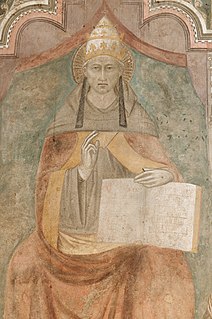
Pope Celestine V, born Pietro Angelerio, also known as Pietro da Morrone, Peter of Morrone, and Peter Celestine, was head of the Catholic Church and ruler of the Papal States for five months from 5 July to 13 December 1294, when he resigned. He was also a monk and hermit who founded the order of the Celestines as a branch of the Benedictine order.

Vittoria Colonna, marchioness of Pescara, was an Italian noblewoman and poet. As an educated, married noblewoman whose husband was in captivity, Colonna was able to develop relationships within the intellectual circles of Ischia and Naples. Her early poetry began to attract attention in the late 1510s and she ultimately became one of the most popular poets of 16th-century Italy. Upon the early death of her husband, she took refuge at a convent in Rome. She remained a laywoman but experienced a strong spiritual renewal and remained devoutly religious for the rest of her life. Colonna is also known to have been a muse to Michelangelo Buonarroti, himself a poet.

Scipione Ammirato was an Italian historian and philosopher. He is now regarded as an important founding figure in the scholarly study of the history of philosophy. He is best known for his political treatise Discorsi sopra Cornelio Tacito, published in 1594. The book soon became “an international classic” with numerous translations.

Italian literature is written in the Italian language, particularly within Italy. It may also refer to literature written by Italians or in other languages spoken in Italy, often languages that are closely related to modern Italian, including regional varieties and vernacular dialects. Italian literature begins in the 12th century, when in different regions of the peninsula the Italian vernacular started to be used in a literary manner. The Ritmo laurenziano is the first extant document of Italian literature.
Cornelio Fabro CSS was an Italian Catholic priest of the Stigmatine Order and a scholastic Thomist philosopher. He was the founder of the Institute for Higher Studies on Unbelief, Religion and Cultures.

Catherine of Bologna [Caterina de' Vigri] was an Italian Poor Clare nun, writer, teacher, mystic, artist, and saint. The patron saint of artists and against temptations, Catherine de' Vigri was venerated for nearly three centuries in her native Bologna before being formally canonized in 1712 by Pope Clement XI. Her feast day is 9 March.

Ludovico Vicentino degli Arrighi was a papal scribe and type designer in Renaissance Italy.

Piero Calamandrei was an Italian author, jurist, soldier, university professor, and politician. Born in Florence, he was one of Italy's leading authorities on the law of civil procedure.

The Catholic Diocese of Pitigliano-Sovana-Orbetello is a Latin suffragan see in the ecclesiastical province of the Metropolitan Archdiocese of Siena-Colle di Val d'Elsa-Montalcino, in Tuscany. The diocese of Sovana had originally been directly dependent upon the Holy See, and its bishops attended the pope's synods. When Pope Pius II, who was a Piccolomini of Siena, created the metropolitan archdiocese of Siena, he made Sovana one of its suffragan dioceses. The bishops of Sovana usually resided in the former palace of the Orsini in Pitigliano, which was given to Bishop Francesco Pio Santi (1776–1789) by the Grand Duke of Tuscany.
Richard Frederick Littledale (1833–1890) was an Anglo-Irish clergyman and writer.
Giovanni Colombini was an Italian merchant and founder of the Congregation of Jesuati.
Bianco di Santi alias Bianco da Siena or Bianco da Lanciolina was an Italian mystic poet and an imitator of Jacopone da Todi. He wrote several religiously-inspired poems (lauda) that were popular in the Middle Ages. First a wool carder, he eventually became a member of the poor Jesuates, founded by Giovanni Colombini.
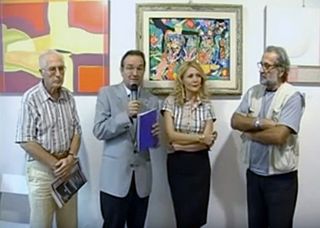
Mauro Marrucci was an Italian artist born in Volterra, Italy on December 18, 1937 by artisans parents and he died November 15, 2014 in Grosseto. Since 1950 he is acting as the Alabaster craftsman and wood and began his artistic research, released by academic schemes, as a graphic designer and painter and makes experiences in the field of sculpture. In 1861 he won first teaching assignment in Tuscany where he continues to practice as a graphic designer, painter and designer. Since 1973, public writings of artistic teaching and non-fiction. In December 1974 on Public Education of drawing the essay "The educational dialogue through the work of art." He also collaborates with the magazine School and cities. In 1982 he moved to Milan to teach Design and Art History at the XIII High School. In 1986 he held the chair of architecture at the Art School "Pietro Aldi" in Grosseto until retirement. From 1957 to 2011 he took part in demonstrations in graphics and painting in Italy and abroad, receiving reports from the most qualified critics and several awards.
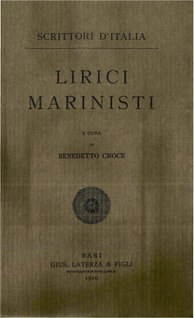
The Scrittori d'Italia was an Italian book collection, published by Gius. Laterza & figli from 1910 to 1987 in Bari. The series was born with the intent to define and explain a cultural canon of the new Italy, disassociating from a culture yet considered too much based on the classic of the humanism, and choosing to represent also the civil history of the newborn Italian State. The original work plan included 660 volumes, of which 287 were actually published for a total of 179 works.
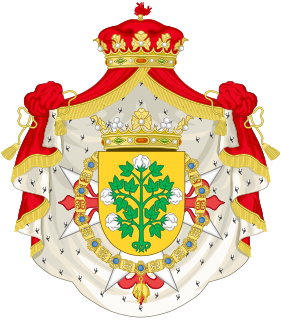
The House of Cotoner is a noble house distinguished in the service of the Spanish Monarchy until the 20th century.
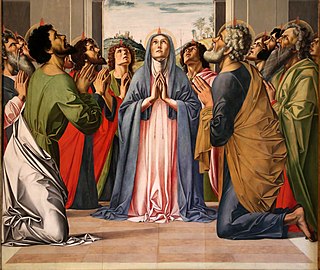
"Come Down, O Love Divine" is a Christian hymn usually sung for the festival of Pentecost. It makes reference to the descent of the Holy Spirit as an invocation to God to come to into the soul of the believer. It is a popular piece of Anglican church music and is commonly sung to the tune "Down Ampney" by Ralph Vaughan Williams.
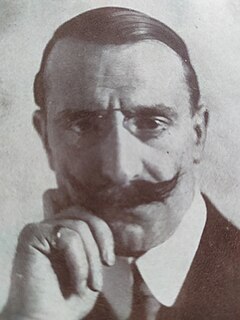
Enrico Thovez was an Italian artist-polymath best known for his contributions as a poet and literary critic.

Giuseppe Maria of Palermo, born Vincenzo Diliberto, was an Italian friar, belonging to the Order of Friars Minor Capuchin (OFMCap.), whose the process of beatification and canonization is currently underway. He is considered by the Catholic Church a Servant of God.

Vittorio Scialoja was an influential Italian Professor of Jurisprudence. His early focus was on Roman law, but he later broadened the scope of his research and teaching to embrace other branches of civil law. Membership of the National Public Council for Higher Education, on which he served between 1893 and 1913, led to his nomination as a senator on 4 March 1904. That in turn became the launch pad for an increasingly engaged parallel career in politics and public life. He served briefly as Minister of Justice in 1909/10, Minister without portfolio between 1916 and 1917, and as Minister of Foreign Affairs during 1919/20.















